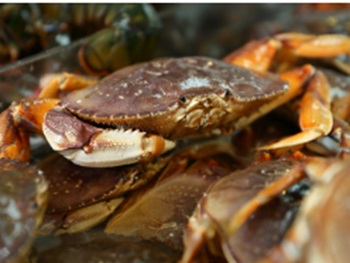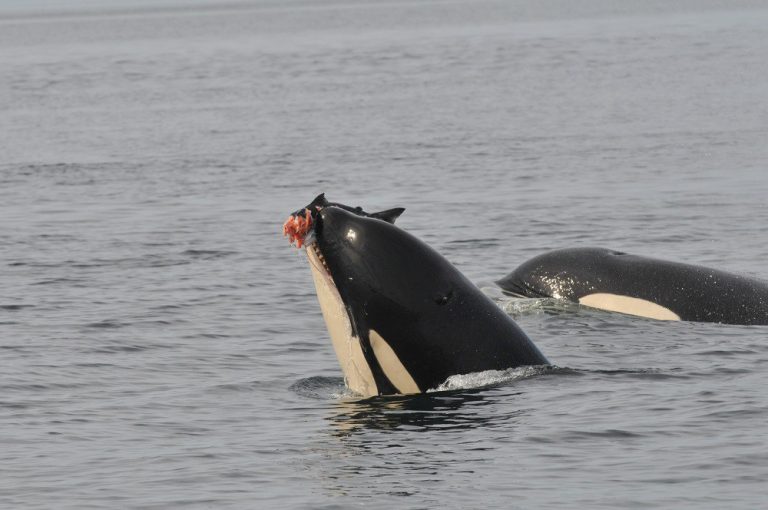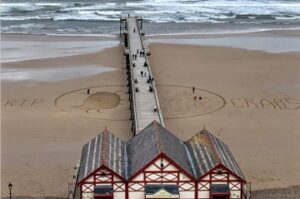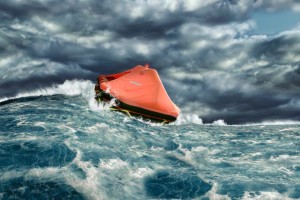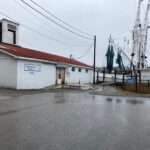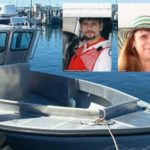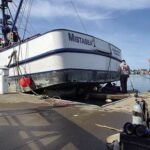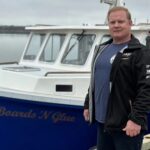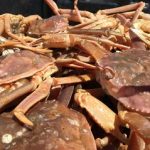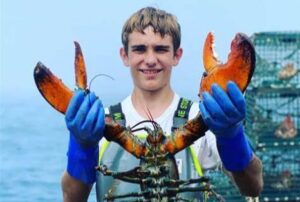Category Archives: National
How the death of a mega-turbine rattled US offshore wind
 When GE Vernova confirmed that it was canceling one of the largest wind turbines ever designed, it signaled a pause in an arms race that for years had led manufacturers to go higher, longer and wider when building towers, blades and other components. Now, that decision is reverberating across U.S. efforts to build wind projects in the Atlantic. New York canceled power contracts for three offshore wind projects last week, citing GE Vernova’s decision to abandon its largest turbine model, a massive 18-megawatt machine. The timing could hardly be worse. Offshore wind is the keystone of New York’s plan to generate 70 percent of its power with renewable energy by the end of the decade.“Using the lower-capacity turbines means that each developer would need to buy 12 to 13 additional turbines to build a project of the same capacity,” Jain said. “That also means more foundations, cables, days hiring expensive installation vessels and so on, significantly raising total project cost assumptions.” more, >>CLICK TO READ<< 10:24
When GE Vernova confirmed that it was canceling one of the largest wind turbines ever designed, it signaled a pause in an arms race that for years had led manufacturers to go higher, longer and wider when building towers, blades and other components. Now, that decision is reverberating across U.S. efforts to build wind projects in the Atlantic. New York canceled power contracts for three offshore wind projects last week, citing GE Vernova’s decision to abandon its largest turbine model, a massive 18-megawatt machine. The timing could hardly be worse. Offshore wind is the keystone of New York’s plan to generate 70 percent of its power with renewable energy by the end of the decade.“Using the lower-capacity turbines means that each developer would need to buy 12 to 13 additional turbines to build a project of the same capacity,” Jain said. “That also means more foundations, cables, days hiring expensive installation vessels and so on, significantly raising total project cost assumptions.” more, >>CLICK TO READ<< 10:24
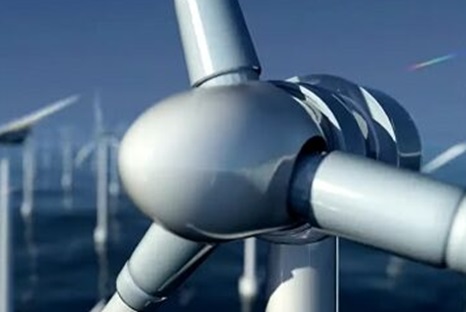
3 New York wind farms scrapped – Cost implications for Mass., Conn., and R.I.
New York pulled the plug Friday on three offshore wind projects that encountered pricing problems after GE canceled the development of a larger turbine that the developers had been counting on. The decision is a setback for the US offshore wind industry and may have some cost implications for Massachusetts, Connecticut, and Rhode Island, which are in the midst of a joint procurement for offshore wind power. The three wind farms proposed for the coast off New York were all tied to a plan by GE Vernova to start producing giant 18-megawatt turbines at a facility on the Hudson River to be subsidized by the state. more, >>CLICK TO READ<< 10:04
Major offshore wind projects in New York canceled in latest blow to industry
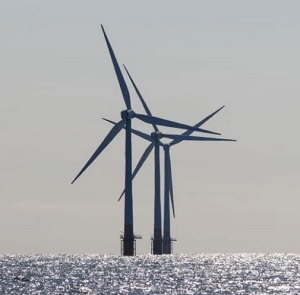 New York’s signature offshore wind projects meant to boost confidence in the industry are being scrapped, a major hit to the industry in the state and the nation. The decision is another setback to New York’s aspirations to achieve 70 percent renewable energy by 2030 and be a hub for the nascent industry in the United States. It will also be another challenge for President Joe Biden’s already likely out-of-reach 30 gigawatt goal for offshore wind by 2030. NYSERDA, the state authority in charge of the deals, announced Friday that no final agreements could be reached with the three projects that received provisional awards in October 2023. Those bids were all linked to major supply chain investments by General Electric and a larger turbine it planned to build that was aimed at boosting the region’s renewable energy portfolio. more, >>CLICK TO READ<< 16:50
New York’s signature offshore wind projects meant to boost confidence in the industry are being scrapped, a major hit to the industry in the state and the nation. The decision is another setback to New York’s aspirations to achieve 70 percent renewable energy by 2030 and be a hub for the nascent industry in the United States. It will also be another challenge for President Joe Biden’s already likely out-of-reach 30 gigawatt goal for offshore wind by 2030. NYSERDA, the state authority in charge of the deals, announced Friday that no final agreements could be reached with the three projects that received provisional awards in October 2023. Those bids were all linked to major supply chain investments by General Electric and a larger turbine it planned to build that was aimed at boosting the region’s renewable energy portfolio. more, >>CLICK TO READ<< 16:50
At start of season, shrimpers are ‘cautiously optimistic’ despite market concerns
 Fresh shrimp soon will be hitting the docks as the first stage of shrimp season gets underway the morning of April 19. This stage is limited to certain areas until the S.C. Department of Natural Resources can confirm the majority of female white shrimp have reproduced. “We want them to be able to spawn before harvest, because the current spawn will become our fall shrimp crop,” DNR spokesperson Erin Weeks said. This approach is essential to ensuring the industry remains sustainable, said Bryan Jones, South Carolina state co-director of the U.S. Shrimpers Coalition and a first-generation shrimper based in McClellanville. Photos, more, >>CLICK TO READ<< 12:28
Fresh shrimp soon will be hitting the docks as the first stage of shrimp season gets underway the morning of April 19. This stage is limited to certain areas until the S.C. Department of Natural Resources can confirm the majority of female white shrimp have reproduced. “We want them to be able to spawn before harvest, because the current spawn will become our fall shrimp crop,” DNR spokesperson Erin Weeks said. This approach is essential to ensuring the industry remains sustainable, said Bryan Jones, South Carolina state co-director of the U.S. Shrimpers Coalition and a first-generation shrimper based in McClellanville. Photos, more, >>CLICK TO READ<< 12:28
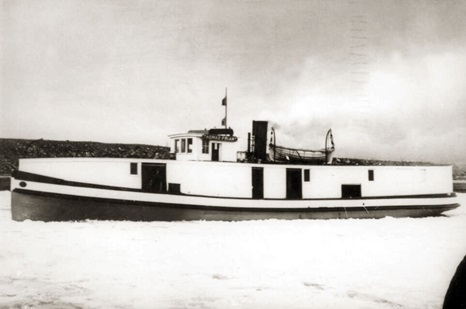
The Day Lake Superior Gave Up Her Dead
The Jones family of Cornucopia, Wisconsin, was well known as both boatbuilders and commercial fishermen on Lake Superior. Thomas Senior and his two sons, Thomas Jr. “Coonie” and Emery, made good money in the fall of 1924 when the price of herring was unusually high.The price of trout was also high at the time, and the men knew they could make even better money if only they could fish trout on the Big Lake after herring season  closed. Overwinter fishing on the open Lake had never been done out of the small harbors of the South Shore. Another problem was, the Joneses didn’t have a proper boat capable of staying out beyond the pack ice for any length of time. Enter the Thomas Friant, a 96-by-18-foot abeam, 81-ton wooden hulled ferry built in Grand Haven, Michigan, in 1884. The passenger-hauling Friant had been converted to a massive – for that era – fishing tug. photos, more, >>CLICK TO READ<< 09:06
closed. Overwinter fishing on the open Lake had never been done out of the small harbors of the South Shore. Another problem was, the Joneses didn’t have a proper boat capable of staying out beyond the pack ice for any length of time. Enter the Thomas Friant, a 96-by-18-foot abeam, 81-ton wooden hulled ferry built in Grand Haven, Michigan, in 1884. The passenger-hauling Friant had been converted to a massive – for that era – fishing tug. photos, more, >>CLICK TO READ<< 09:06
Crab fishermen test pop-up fishing gear to reduce whale entanglements
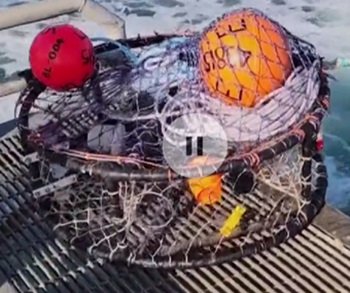 Traditionally, the Dungeness crab fishing season runs from November through June using vertical line fishing gear that spans from the surface to the seafloor. After whale entanglements spiked from 2015 to 2018, the Dungeness crab season has faced delay or closure since 2019. Season closures are affecting the fishing business, but now during this closure, a handful of commercial fishermen such as Brand Little, are testing a whale-safe kind of fishing gear, called “pop-up” or “ropeless” fishing gear, hoping the state will authorize this alternative for use next season, so fishermen can still work. Commercial fisherman Brand Little described how the first test of the spring season went with about 20 fishermen. Video, more, >>CLICK TO READ<< 08:59
Traditionally, the Dungeness crab fishing season runs from November through June using vertical line fishing gear that spans from the surface to the seafloor. After whale entanglements spiked from 2015 to 2018, the Dungeness crab season has faced delay or closure since 2019. Season closures are affecting the fishing business, but now during this closure, a handful of commercial fishermen such as Brand Little, are testing a whale-safe kind of fishing gear, called “pop-up” or “ropeless” fishing gear, hoping the state will authorize this alternative for use next season, so fishermen can still work. Commercial fisherman Brand Little described how the first test of the spring season went with about 20 fishermen. Video, more, >>CLICK TO READ<< 08:59
A submerged concern: offshore wind cables
 As offshore wind turbines undergo construction in waters south of the Vineyard, and with some already standing and delivering power, the debates on the Island regarding the industry continue. John Keene, president of the Martha’s Vineyard Fishermen’s Preservation Trust, told the Times that some in the fishing industry are nervous about how the electromagnetic field from the cables can affect marine life. Keene said the concern is that the fields emitted from cables could act like a fence, particularly for migratory species, and impact the behavior of marine species. “There’s a lot of unknowns,” he said. more, >>CLICK TO READ<< 07:14
As offshore wind turbines undergo construction in waters south of the Vineyard, and with some already standing and delivering power, the debates on the Island regarding the industry continue. John Keene, president of the Martha’s Vineyard Fishermen’s Preservation Trust, told the Times that some in the fishing industry are nervous about how the electromagnetic field from the cables can affect marine life. Keene said the concern is that the fields emitted from cables could act like a fence, particularly for migratory species, and impact the behavior of marine species. “There’s a lot of unknowns,” he said. more, >>CLICK TO READ<< 07:14
Atlantic fisheries body confirms cyber incident after 8Base ransomware gang claims breach
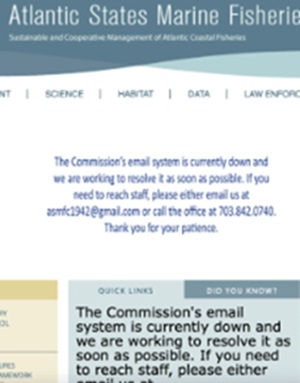 A fisheries management organization for the East Coast is dealing with a cyber incident following claims by a ransomware gang that it stole data. The Atlantic States Marine Fisheries Commission (ASMFC) — an 80-year-old organization created by Congress and made up of officials from the Atlantic coast states — said this week that its email system is down. The organization was forced to create a temporary email address and provide a phone number people can use to contact the information. Tina Berger, director of communications for ASMFC, told Recorded Future News that they are currently “responding to a cyber incident affecting our systems” but did not respond to further questions about whether they are dealing with a ransomware attack. more, >>CLICK TO READ<< 15:04
A fisheries management organization for the East Coast is dealing with a cyber incident following claims by a ransomware gang that it stole data. The Atlantic States Marine Fisheries Commission (ASMFC) — an 80-year-old organization created by Congress and made up of officials from the Atlantic coast states — said this week that its email system is down. The organization was forced to create a temporary email address and provide a phone number people can use to contact the information. Tina Berger, director of communications for ASMFC, told Recorded Future News that they are currently “responding to a cyber incident affecting our systems” but did not respond to further questions about whether they are dealing with a ransomware attack. more, >>CLICK TO READ<< 15:04
Three fishermen forced into life raft as trawler starts sinking
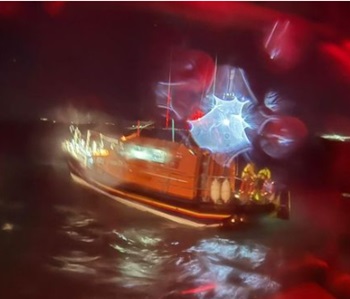 RNLI teams from Exmouth and Torbay carried out a joint rescue mission after three fishermen found themselves in peril when their trawler began sinking. At 9.32pm last night, Tuesday, April 16, HM Coastguard requested the launch of both the Exmouth and Torbay RNLI lifeboats, having received an urgent mayday call. The brevity of the desperate plea was spine-chilling as the message simply stated: “fishing vessel sinking”. This alarming report was quickly followed by a 999 call confirming that all three crew had taken to the vessel’s life raft. Photos, more, >>CLICK TO READ<< 10:36
RNLI teams from Exmouth and Torbay carried out a joint rescue mission after three fishermen found themselves in peril when their trawler began sinking. At 9.32pm last night, Tuesday, April 16, HM Coastguard requested the launch of both the Exmouth and Torbay RNLI lifeboats, having received an urgent mayday call. The brevity of the desperate plea was spine-chilling as the message simply stated: “fishing vessel sinking”. This alarming report was quickly followed by a 999 call confirming that all three crew had taken to the vessel’s life raft. Photos, more, >>CLICK TO READ<< 10:36
Alaska delusions – The great takeover of federal waters
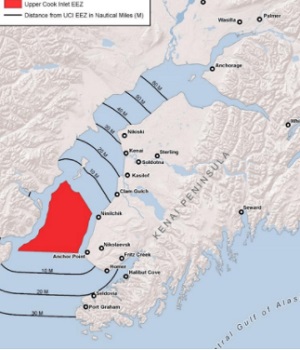 Oh if only the facts were as a trio of Alaska House legislators would like their colleagues to believe. They’ve drafted a resolution calling on Congress to extend state waters to 15 miles off the coast of Alaska because this would serve the state’s interest in supporting a “seafood industry generat(ing) over $163,000,000 in revenue for state and local governments.” All those zeros make that look like a great deal of money, but in terms of state revenue, $163 million is chicken feed. The state’s now fading oil industry is forecast to produce $3 billion in fiscal year 2024 or almost 20 times more, according to state projections. Worse though, the claim to $163 million in state revenue from the fishing industry comes from a report compiled for the Alaska Seafood Marketing Institute (ASMI) that is badly outdated, and the resolution now based on that report lacks the context which even the seafood sales promotion organization felt compelled to add. more, >>CLICK TO READ<< 08:56
Oh if only the facts were as a trio of Alaska House legislators would like their colleagues to believe. They’ve drafted a resolution calling on Congress to extend state waters to 15 miles off the coast of Alaska because this would serve the state’s interest in supporting a “seafood industry generat(ing) over $163,000,000 in revenue for state and local governments.” All those zeros make that look like a great deal of money, but in terms of state revenue, $163 million is chicken feed. The state’s now fading oil industry is forecast to produce $3 billion in fiscal year 2024 or almost 20 times more, according to state projections. Worse though, the claim to $163 million in state revenue from the fishing industry comes from a report compiled for the Alaska Seafood Marketing Institute (ASMI) that is badly outdated, and the resolution now based on that report lacks the context which even the seafood sales promotion organization felt compelled to add. more, >>CLICK TO READ<< 08:56
Athearn Marine Agency Boat of the Week: 57′ Aluminum Dragger, Cummins KT-1150, State and Federal Permits
 To review specifications, information, and 25 photos’, >click here<, To see all the boats in this series, >click here< 07:18
To review specifications, information, and 25 photos’, >click here<, To see all the boats in this series, >click here< 07:18
Torbay RNLI assists trawler with total loss of power in heavy seas at 04:00am
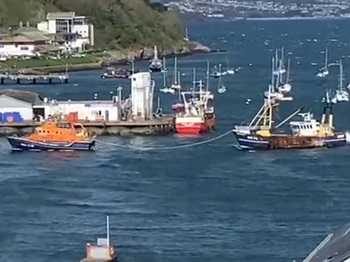 On Monday 15th April 2024 at 03:23am Solent Coastguard requested Torbay RNLI launch to assist a 100-ton beam trawler who had got into some difficulties 15 miles southeast of Berry Head. She had suffered a complete loss of power. Pagers went off and our volunteer crew duly assembled at the station, changed into wet-weather gear, made ready the All-weather Lifeboat (ALB) and launched at 03:45am. Weather and sea conditions early this morning, especially 15 miles into the Channel, were challenging. Force 7 gusting 8/9, north westerly winds, and choppy seas. Loss of both engine and generator power in these conditions meant the trawler and all her associated gear, would be unwieldly and vulnerable to the turbulent and freshening conditions. She was very much what is termed a ‘dark ship’. Photos, more, >>CLICK TO READ<< 16:39
On Monday 15th April 2024 at 03:23am Solent Coastguard requested Torbay RNLI launch to assist a 100-ton beam trawler who had got into some difficulties 15 miles southeast of Berry Head. She had suffered a complete loss of power. Pagers went off and our volunteer crew duly assembled at the station, changed into wet-weather gear, made ready the All-weather Lifeboat (ALB) and launched at 03:45am. Weather and sea conditions early this morning, especially 15 miles into the Channel, were challenging. Force 7 gusting 8/9, north westerly winds, and choppy seas. Loss of both engine and generator power in these conditions meant the trawler and all her associated gear, would be unwieldly and vulnerable to the turbulent and freshening conditions. She was very much what is termed a ‘dark ship’. Photos, more, >>CLICK TO READ<< 16:39
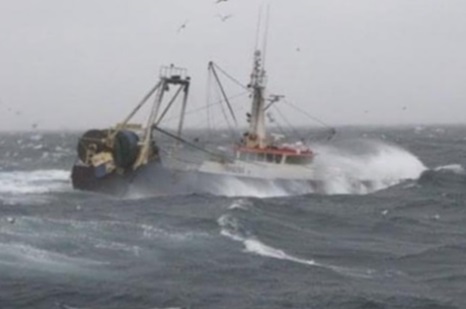
More things to worry about by Jerry Leeman
Wind energy in the Gulf of Maine is going to be a great challenge to all varieties of commercial and recreational fisheries. What disturbs me the most is, in all my travels along the coast in the four major fishing ports in New England, very few commercial fishing Captains were aware of the new talks on changing the management stock areas and the reallocation of codfish. This is a concern for many now that they are aware. This raises the question, if no Captain’s that fish inside the Wind Energy proposed areas were not aware of this future action, then how can the last comment periods on the proposed sights be accurately sighted? Charts graphs, more, >>click to read<< 13:16
Maine researchers, students are sorting through muck and slugs to study baby scallops
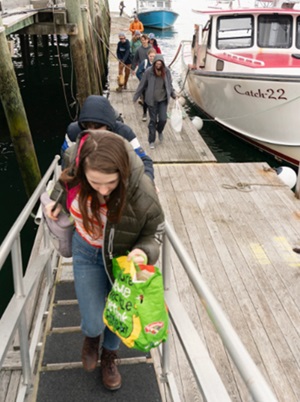 People from each of these groups are collaborating with the Maine Center for Coastal Fisheries, Hurricane Island Center for Science and Leadership and Colby College in the second year of a study meant to help identify how many young scallops there are off Maine’s coast, and where they’re living. The tiny, two-shelled juveniles, or spat, are uniquely important to fishermen who scoop wild scallops from the ocean floor and aquaculture farmers who raise them in contained areas. Unlike most aquaculture farmers who work with other species, scallop farmers can only grow their bounty from wild spat – the same spat that wild scallop fishermen need to feed the general population. Photos, more, >>click to read<< 12:50
People from each of these groups are collaborating with the Maine Center for Coastal Fisheries, Hurricane Island Center for Science and Leadership and Colby College in the second year of a study meant to help identify how many young scallops there are off Maine’s coast, and where they’re living. The tiny, two-shelled juveniles, or spat, are uniquely important to fishermen who scoop wild scallops from the ocean floor and aquaculture farmers who raise them in contained areas. Unlike most aquaculture farmers who work with other species, scallop farmers can only grow their bounty from wild spat – the same spat that wild scallop fishermen need to feed the general population. Photos, more, >>click to read<< 12:50
IS THE G.A.O. SLOWWALKING ITS INVESTIGATION OF OFFSHORE WIND IMPACTS? By Jim Lovgren
 On June 15, 2023, Congressman Chris Smith issued a press release touting the acceptance by the General Accountability Office [GAO], of a request by the House Natural Resources Committee to investigate a wide range of issues related to the development of offshore wind. The Committee letter, signed by Chairman Bruce Westerman, was submitted on May 15 th , 2023, almost a year ago. I bring this up because the average time-length of most GAO investigations is three months. Which begs the question; Is the Biden administration “slow-walking” the GAO investigation? Slow-walking is the act of purposefully delaying action by stalling, stonewalling, making excuses of how hard it is to do, and other whiney efforts at delaying an investigation until it fails because it is too late. It is the bureaucrat’s favorite weapon of choice when forced to disclose vital information, that their politician benefactors don’t want exposed. more, >>click to read<< 06:10
On June 15, 2023, Congressman Chris Smith issued a press release touting the acceptance by the General Accountability Office [GAO], of a request by the House Natural Resources Committee to investigate a wide range of issues related to the development of offshore wind. The Committee letter, signed by Chairman Bruce Westerman, was submitted on May 15 th , 2023, almost a year ago. I bring this up because the average time-length of most GAO investigations is three months. Which begs the question; Is the Biden administration “slow-walking” the GAO investigation? Slow-walking is the act of purposefully delaying action by stalling, stonewalling, making excuses of how hard it is to do, and other whiney efforts at delaying an investigation until it fails because it is too late. It is the bureaucrat’s favorite weapon of choice when forced to disclose vital information, that their politician benefactors don’t want exposed. more, >>click to read<< 06:10
Where Have All The Right Whales Gone?
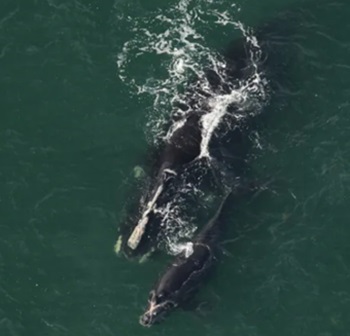 Marine researchers have mapped the density of one of the most endangered large whale species worldwide, the North Atlantic right whale, using newly analyzed data to predict and help avoid whales’ harmful, even fatal, exposure to commercial fishing and vessel strikes. Duke University’s Marine Geospatial Ecology Lab led a collaboration of 11 institutions in the United States that pooled 17 years of available visual survey data covering 9.7 million square kilometers of the U.S. Atlantic – roughly the same area as the entire contiguous United States. more, >>click to read<< 16:37
Marine researchers have mapped the density of one of the most endangered large whale species worldwide, the North Atlantic right whale, using newly analyzed data to predict and help avoid whales’ harmful, even fatal, exposure to commercial fishing and vessel strikes. Duke University’s Marine Geospatial Ecology Lab led a collaboration of 11 institutions in the United States that pooled 17 years of available visual survey data covering 9.7 million square kilometers of the U.S. Atlantic – roughly the same area as the entire contiguous United States. more, >>click to read<< 16:37
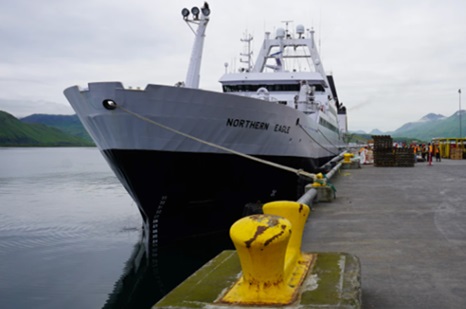
Fishery council seeks more information before deciding on chum bycatch in Bering Sea pollock fishery
The North Pacific Fishery Management Council, which manages federal fisheries in Alaska, will continue to explore options for how to manage chum salmon bycatch in the Bering Sea pollock fishery. The council, facing rising pressure from western Alaska communities who depend on chum as a cornerstone of subsistence, released a statement Wednesday summarizing their decision from their April meeting. Dismal western Alaska salmon returns have reached crisis levels. And while the council listened to scores of harrowing testimonies recalling empty rivers and vacant fish camps, the council was also presented with research that suggested bycatch limits wouldn’t do much to help the crisis. “Available science indicates recent declines in chum salmon populations across many regions of the North Pacific, including Canada, Japan, Russia, Korea, and the U.S., appear to be driven by warmer water temperatures in both the marine and freshwater environments,” the council said in the statement. more, >>click to read<< 12:38
An ocean of ambition
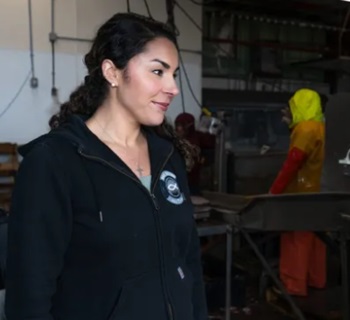 One by one, a trustee listed the assets up for sale: eight commercial fishing vessels and 48 federal fishing permits. It was a fire-sale liquidation for bankrupt Blue Harvest Fisheries — one of New England’s largest seafood companies — and the largest bundle of groundfish permits in recent history to come available on the market. Bids, the trustee announced, would start at $10 million. Cassie Canastra was first to act: “$11 million,” she said, without skipping a beat. There was a brief pause, as a team representing O’Hara Corporation, part owner of New Bedford-based scallop giant Eastern Fisheries, huddled to discuss their options. They raised the bid to $11.25 million. “$12 million,” Canastra responded, showing no sign of relenting. Photos, more, >>click to read<< 11:03
One by one, a trustee listed the assets up for sale: eight commercial fishing vessels and 48 federal fishing permits. It was a fire-sale liquidation for bankrupt Blue Harvest Fisheries — one of New England’s largest seafood companies — and the largest bundle of groundfish permits in recent history to come available on the market. Bids, the trustee announced, would start at $10 million. Cassie Canastra was first to act: “$11 million,” she said, without skipping a beat. There was a brief pause, as a team representing O’Hara Corporation, part owner of New Bedford-based scallop giant Eastern Fisheries, huddled to discuss their options. They raised the bid to $11.25 million. “$12 million,” Canastra responded, showing no sign of relenting. Photos, more, >>click to read<< 11:03
Higgins, Nehls Introduce the Save Our Shrimpers Act
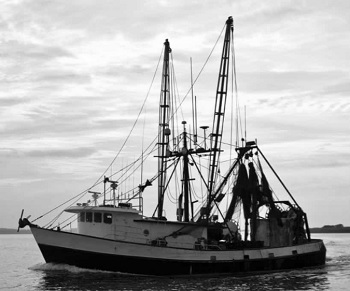 Congressmen Clay Higgins (R-LA) and Troy Nehls (R-TX) introduced the Save Our Shrimpers Act of 2024, which would prohibit federal funds from being made available to International Financial Institutions (IFIs) that subsidize foreign activity relating to shrimp farming, shrimp processing, or the export of shrimp to the United States. Due to a rise in foreign seafood dumping and increased operational expenses, our nation’s domestic shrimpers are struggling to stay in business. Recent reports found that U.S. taxpayer dollars are being used to finance foreign shrimp farm operations through IFIs, such as the International Monetary Fund (IMF), contributing to the challenges facing the domestic shrimp industry. more, >>click to read<< 09:27
Congressmen Clay Higgins (R-LA) and Troy Nehls (R-TX) introduced the Save Our Shrimpers Act of 2024, which would prohibit federal funds from being made available to International Financial Institutions (IFIs) that subsidize foreign activity relating to shrimp farming, shrimp processing, or the export of shrimp to the United States. Due to a rise in foreign seafood dumping and increased operational expenses, our nation’s domestic shrimpers are struggling to stay in business. Recent reports found that U.S. taxpayer dollars are being used to finance foreign shrimp farm operations through IFIs, such as the International Monetary Fund (IMF), contributing to the challenges facing the domestic shrimp industry. more, >>click to read<< 09:27
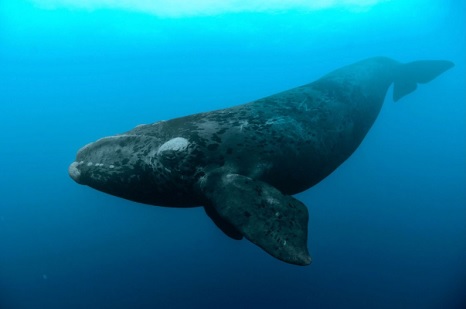
OFFSHORE WIND AND WHALES – A collection of articles from fisherynation.com By Jim Lovgren
After over forty-five years as a commercial fisherman out of Point Pleasant NJ, I sold my boat the Shadowfax, and retired, moving to California. My experience as a fisherman began in the early 1970’s, and I observed and learned an encyclopedia of knowledge concerning fishing, the environment, and fishery management, including politics. As I observed the continuing massacre and the lies denying them by government and media puppets, I under took an effort to expose the truth concerning offshore wind. The following articles are listed in order of their appearance in Fisherynation.com, and are best understood by reading them in order. Just click on the title of an article you’d like to read. more, >>click to read<< 15:09
Foreign seafood could be banned at Louisiana schools
 Students could be guaranteed domestic catch when seafood is on the school menu if a proposal before the Louisiana Legislature becomes law. The state House approved a bill Tuesday that would prohibit any public or private schools that receive state money from serving foreign seafood to students. House Bill 429, sponsored by Rep. Marcus Bryant, D-New Iberia, passed in a 94-7 vote with bipartisan support. It will next head to the Senate for consideration. An influx of cheap foreign catch, imported mostly from South America and Asia, has flooded Louisiana restaurants and retailers. Consumers are either oblivious to it or mistakenly believe they’re eating local fare because of deceptive labeling practices, according to the Louisiana Shrimp Association. more, >>click to read<< 07:54
Students could be guaranteed domestic catch when seafood is on the school menu if a proposal before the Louisiana Legislature becomes law. The state House approved a bill Tuesday that would prohibit any public or private schools that receive state money from serving foreign seafood to students. House Bill 429, sponsored by Rep. Marcus Bryant, D-New Iberia, passed in a 94-7 vote with bipartisan support. It will next head to the Senate for consideration. An influx of cheap foreign catch, imported mostly from South America and Asia, has flooded Louisiana restaurants and retailers. Consumers are either oblivious to it or mistakenly believe they’re eating local fare because of deceptive labeling practices, according to the Louisiana Shrimp Association. more, >>click to read<< 07:54
Lobster harvesters in Atlantic Canada to vote on increasing minimum legal size this year
 At stake is maintaining access to the United States market. “It will be an individual vote. That’s a big decision that every single enterprise and owner has to look at from their own business,” said Heather Mulock, executive director of the Coldwater Lobster Association, which represents fishermen in lobster fishing area 34 (LFA 34). In late May or June, the 979 licence holders in the area will be asked to vote on whether to match increases in allowable U.S. catch measurements that will come into effect Jan. 1, 2025, and again in 2027. Live Canadian lobster that fall under the new limits would not be allowed into the U.S. That includes bonded shipments of lobster under the new minimum in the U.S., according to an information package sent to fishermen in southwestern Nova Scotia. That could block trucking of “undersized” Canadian lobster across the border for flights to Asia from airports in Boston or New York. more, >>click to read<< 08: 57
At stake is maintaining access to the United States market. “It will be an individual vote. That’s a big decision that every single enterprise and owner has to look at from their own business,” said Heather Mulock, executive director of the Coldwater Lobster Association, which represents fishermen in lobster fishing area 34 (LFA 34). In late May or June, the 979 licence holders in the area will be asked to vote on whether to match increases in allowable U.S. catch measurements that will come into effect Jan. 1, 2025, and again in 2027. Live Canadian lobster that fall under the new limits would not be allowed into the U.S. That includes bonded shipments of lobster under the new minimum in the U.S., according to an information package sent to fishermen in southwestern Nova Scotia. That could block trucking of “undersized” Canadian lobster across the border for flights to Asia from airports in Boston or New York. more, >>click to read<< 08: 57
Athearn Marine Agency Boat of the Week: 141′ RSW Steel Stern Trawler, 1650HP CAT
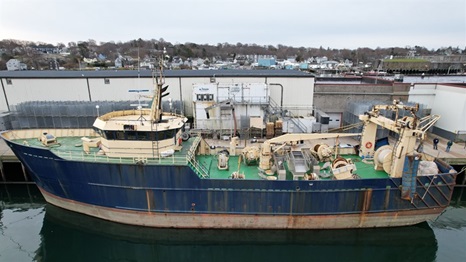 To review specifications, information, and 43 photos’, Video, >click here<, To see all the boats in this series, >click here< 07:33
To review specifications, information, and 43 photos’, Video, >click here<, To see all the boats in this series, >click here< 07:33
NOAA/NMFS Ignores Dangerous Sound Levels from Pile Driving – By Jim Lovgren
 A new recently released report from Rand Acoustics, LLC scientifically documented that the stated sound levels created by the pile driving of wind turbine stanchions into the seafloor is much louder than the NOAA approved levels. In a study dated November 2, 2023, the researchers used acoustic listening devises to record the underwater sounds being created from piledriving by the crane ship “Orion” in the Vineyard wind BOEM lease area OCS-A 0501 southwest of Nantucket Island. Prior to this research, Rand Acoustics documented the underwater sound levels being produced by some of the research vessels using sonar and seismic devises to examine and document the seafloor prior to turbine construction. This research proved that the sound levels produced by these research vessels exceeded the stated sound levels approved by NOAA/NMFS to protect marine mammals and resulted in the documentary film “Thrown to the wind”. more, >>click to read<< 11:28
A new recently released report from Rand Acoustics, LLC scientifically documented that the stated sound levels created by the pile driving of wind turbine stanchions into the seafloor is much louder than the NOAA approved levels. In a study dated November 2, 2023, the researchers used acoustic listening devises to record the underwater sounds being created from piledriving by the crane ship “Orion” in the Vineyard wind BOEM lease area OCS-A 0501 southwest of Nantucket Island. Prior to this research, Rand Acoustics documented the underwater sound levels being produced by some of the research vessels using sonar and seismic devises to examine and document the seafloor prior to turbine construction. This research proved that the sound levels produced by these research vessels exceeded the stated sound levels approved by NOAA/NMFS to protect marine mammals and resulted in the documentary film “Thrown to the wind”. more, >>click to read<< 11:28
Silver Bay Seafoods and Peter Pan Seafoods Announce Valdez Acquisition and 2024 Operational Plan
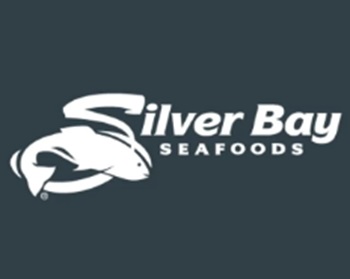 Silver Bay Seafoods and Peter Pan Seafoods announced today that the agreement for Silver Bay to acquire Peter Pan’s Valdez facility has been finalized and that Silver Bay plans to operate the Peter Pan facilities in Port Moller and Dillingham for the 2024 salmon season. Shifting operations of the two facilities to SBS is a component of a larger restructuring, still being finalized, in which Silver Bay would acquire Peter Pan’s processing facilities and support sites after the 2024 salmon season. Peter Pan will remain active in conducting the remaining activities needed to close out 2023 operations, including sales and accounting functions. Both companies are committed to a seamless transition and ensuring minimal disruption to fishermen, communities, and employees. more, >>click to read<< 10:21
Silver Bay Seafoods and Peter Pan Seafoods announced today that the agreement for Silver Bay to acquire Peter Pan’s Valdez facility has been finalized and that Silver Bay plans to operate the Peter Pan facilities in Port Moller and Dillingham for the 2024 salmon season. Shifting operations of the two facilities to SBS is a component of a larger restructuring, still being finalized, in which Silver Bay would acquire Peter Pan’s processing facilities and support sites after the 2024 salmon season. Peter Pan will remain active in conducting the remaining activities needed to close out 2023 operations, including sales and accounting functions. Both companies are committed to a seamless transition and ensuring minimal disruption to fishermen, communities, and employees. more, >>click to read<< 10:21
Lawmakers support new fees on Louisiana seafood dealers who import foreign catch
 House Bill 748, sponsored by Rep. Jessica Domangue, R-Houma, would raise the state’s imported seafood safety fee from a flat $100 per year to a 0.1 percent assessment on the company’s gross revenue. The proposal marks the freshman lawmaker’s first bill, which Domangue, the daughter of a commercial fisherman, called “very special” for its ability to protect the domestic seafood industry. It cleared the House Committee on Natural Resources and Environment with unanimous support and will head to the House floor for consideration. Imported seafood has become so ubiquitous in Louisiana and across the nation that it has decimated the once-thriving domestic fishing industry. The low cost and ample availability of foreign catch has put negative pressure on local product prices, making it near impossible for those in the Louisiana commercial fishing industry to stay above water profit wise. more, >>click to read<< 06:36
House Bill 748, sponsored by Rep. Jessica Domangue, R-Houma, would raise the state’s imported seafood safety fee from a flat $100 per year to a 0.1 percent assessment on the company’s gross revenue. The proposal marks the freshman lawmaker’s first bill, which Domangue, the daughter of a commercial fisherman, called “very special” for its ability to protect the domestic seafood industry. It cleared the House Committee on Natural Resources and Environment with unanimous support and will head to the House floor for consideration. Imported seafood has become so ubiquitous in Louisiana and across the nation that it has decimated the once-thriving domestic fishing industry. The low cost and ample availability of foreign catch has put negative pressure on local product prices, making it near impossible for those in the Louisiana commercial fishing industry to stay above water profit wise. more, >>click to read<< 06:36
Overspreading Since the Seventies
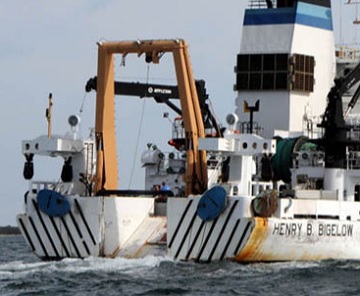 NOAA Fisheries has been overspreading their nets since they changed from a side trawler to stern trawler back in the 1970s! On the Delaware side trawler, the wires were put together on the side of the boat and on NOAA’s Stern Trawler Bigelow, the wires are off the stern of the boat which is 32 feet apart. This is causing NOAA’s over-spread nets. Now NOAA has been working with a restrictor-rope on the doors, to stop the doors from over spreading the nets. more, >>click to read<< By Rocky Novello
NOAA Fisheries has been overspreading their nets since they changed from a side trawler to stern trawler back in the 1970s! On the Delaware side trawler, the wires were put together on the side of the boat and on NOAA’s Stern Trawler Bigelow, the wires are off the stern of the boat which is 32 feet apart. This is causing NOAA’s over-spread nets. Now NOAA has been working with a restrictor-rope on the doors, to stop the doors from over spreading the nets. more, >>click to read<< By Rocky Novello
Something Is Starting to Smell Fishy About the Global Seafood Supply Chain
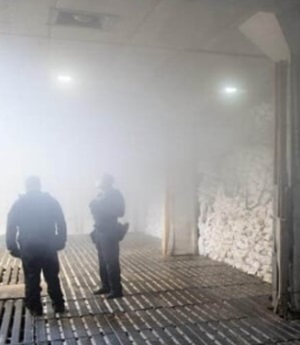 The past half year has seen a steady stream of disturbing reports about serious human rights abuses tied to industrial fishing. The story about conditions at the shrimp plant in India come against a broader backdrop. The same week that the whistleblower documents were published, the Corporate Accountability Lab, which is an advocacy group of lawyers and researchers, released a report detailing severe cases of captive and forced labor as well as environmental concerns often tied to wastewater at a variety of other shrimp plants in India. It’s worth remembering the history here. Labor abuse tied to seafood is not a new problem. And yet, here we are again: the seafood problems previously highlighted in Thailand are now being widely revealed in China and India. more, >>click to read<< 08:05
The past half year has seen a steady stream of disturbing reports about serious human rights abuses tied to industrial fishing. The story about conditions at the shrimp plant in India come against a broader backdrop. The same week that the whistleblower documents were published, the Corporate Accountability Lab, which is an advocacy group of lawyers and researchers, released a report detailing severe cases of captive and forced labor as well as environmental concerns often tied to wastewater at a variety of other shrimp plants in India. It’s worth remembering the history here. Labor abuse tied to seafood is not a new problem. And yet, here we are again: the seafood problems previously highlighted in Thailand are now being widely revealed in China and India. more, >>click to read<< 08:05







